illustration by Gene Stewart
As we crested the ridge the dogs alerted and began tugging on the leads, moaning in that eager, almost sexual tone dogs have when they desperately want to follow their instincts. We nearly let them loose, too; the tracks in the gully had seemed fresh. Something made us hold back, though, and a few moments later a large mountain goat burst from cover to scramble up an impossibly sheer cliff. It stood regal and disdainful atop the cliff, in silhouette, for all the world as if showing off, before vanishing in a single bound over the far side.
At once the dogs settled and I suggested we take them back into the gully to refresh their scent. “We’re after Yeti, not goat,” was my point.
Bob nodded and Carla and Jim came down from higher up as we turned around. Sun had us sweating but a crisp breeze was picking up from the northeast and we knew that night would be frigid, perhaps snowy. It was fairly late in the season to be tracking Yeti but the TV production crew who’d hired us was paying premium prices and I was determined to give them good weight.
After all, I’d talked them into taking a team of tracking dogs. “Has anyone ever tried it?” I asked, and no one knew of such a Yeti hunt. “Not even Tom Slick’s expedition took dogs.” It seemed only reasonable to me that tracking dogs would work.
Explorers came back with plaster casts of tracks, bits of spoor such as tufts of hair or stool samples, and in more recent times photographs of blobs on distant slopes had given way to large, seemingly upright animals shuffling behind foliage in blurs of infrared false color. It was those clips that gave me the idea to use dogs.
At the meeting on the 36th floor of the NYC high-rise I showed a group of TV executives the sequence Josh Gates had shot in 2007, in Nepal. It showed a manlike heat source behind moving foliage darting right to left up a slope and out of sight. “Not conclusive by any means, possibly a Sherpa sent to fetch batteries for their equipment, but--” And here I signaled for my partner Bob to open the door, letting our big friendly dogs burst into the room to slobber on Versace suits.
As they sniffed and whined and wagged their tails I said, “If dogs had been part of Josh’s team he could have let them go after this shape and we might then know.”
“Aren’t you afraid the dogs might be killed?”
I looked at the young woman who’d asked and smiled but lowered my tone. “It’s always a concern, ma’am, but these dogs are trained to go after bear. These very dogs have kept twelve-hundred pound grizzlies at bay until we got there with tranquilizers and radio collars, and, barring a lucky swat from a set of claws, they can do it again with a Yeti, I’m sure, and come out of it unscathed.”
Bob cut me a look in the darkened room, knowing I was shading things a bit too sunny; truth was, we tended to lose three or four dogs per expedition when larger animals were concerned. Dogs are brave when frenzied, or stupid, so they will attack without hesitation any beast that riles them past their training. They go red, we call it.
Still, our dogs were the best in the business, and my notion of sending them after a Yeti appealed to the producers.
We got the assignment and spent the next couple months rounding up a team; getting travel permits, visas, and passports; getting shots; arranging for supplies; buying clothes and equipment; facing the challenge of training dogs to track an animal with no confirmed scent. Bob favored the notion of sight dogs trained to go after big silhouettes. I liked scent.
Our plan was to find footprints and let the dogs fix on that scent. If it turned out to be a hoaxer making the tracks we would very likely find out at once by the dogs’ response. We were taking bloodhounds, wolfhounds, deerhounds, and even a handful of bassets; big animals, most of them, and fully capable of tracing minute scent trails for miles, sometimes over terrain that daunted even us.
There were cases on record of bloodhounds tracking kidnap victims who’d been put into the trunks of cars and driven miles. How it was even possible remained a mystery.
Bob and I were partners in the search-and-rescue dog team business, while Carla and Jim funded some of our fringe expeditions, such as searching for skunk apes, Bigfoot, and even the occasional ghost. We had instigated most of these paranormal or cryptid searches, figuring that dogs could track escaped criminals even when they drove away in cars, and sniff out the beginnings of skin and other types of cancer, and find termites before the amplified microphones could even hear them, so why not try dogs on things people had traditionally failed to find when they looked?
Besides, it made for good fringe TV.
My job was handling the bassets on leads while Bob kept the wolf- and deerhounds in reserve, in a pen, and handled the bloodhounds on leads. The pen was rolled and carried, depending on terrain, by ATVs or Sherpas. It could even be mounted on a cart and pulled behind a truck in situations permitting such vehicles. You’d be surprised how many places are closed to them these days, or snowmobiles, or dirt bikes even.
As it turned out, though, it was just me walking my favorite pair of beagles that turned up the most remarkable find, the one everyone’s still discussing.
I’d gotten up early after a bad night. We had been celebrating a local festival with the Sherpa leaders the night before and I was keyed up from that and from a scheduled uplink to my wife and kids back in Montana that was getting close. We were budgeted for one uplink a week per team member, and my rotation put me for that coming Saturday.
It was Friday the thirteenth when I left my tent and checked on the dogs. Most were glad to see me but I noticed Betsy and Wild Boy, two of my three beagles, remained listless when I approached their pen. “You feeling the altitude?” I asked them, petting them and ascertaining their noses were cold and wet and the pads of their feet were whole and not too warm.
Deciding a walk would perk them up, I collared and leashed both and led them from the dog area, which was now a place of unholy noise I’m sure last night’s other celebrants did not appreciate.
I let the dogs lead me for awhile, content to breathe crisp air cleaner than anywhere else in the world. White-peaked mountains surrounded me and stars twinkled brightly in the purple velvet sky. Dawn would come soon, I knew. Already the tips of the highest mountains gleamed like beacons.
We had meandered down slope in a wayward, nose-led zigzag route that had brought us to a ravine cut by a glacial stream. Sliding down some talus, the dogs and I ended up walking along the stream in a deep shadow even as the air above the ravine glowed golden and ever brighter.
The dogs seemed agitated, as if following a broken trail. They surged forward a few yards, then scanned side to side until once again charging forward. I held their leads and let them go where they wanted.
It turned out they led me to a boulder the size of a small house. It has probably been moved there the last time the glacier’s ice had crept that far downslope. Now it stood blocking the way, wedged into the ravine. The stream ran from both sides, as if embracing the boulder.
To go around meant climbing scree; such loose rock is difficult and dangerous. Turning around was the only reasonable solution. I could backtrack and find a safer way out of the ravine, then come back to the boulder and see if the dogs would pick up a scent trail upslope from it.
As I tugged their leads to pull them back with me, Betsy’s collar loosened and she slipped out of it. Surprised, I called after her as she bolted toward the undercurve of the huge boulder. Meanwhile Wild Boy noticed me not paying strict attention and made to follow Betsy.
A deep snarl, followed by a resonant roar, stopped me in my tracks. Wild Boy came up short, too, sitting comically as if he’d been commanded to, his butt in the stream. That lasted all of a couple seconds, though. When the roar came again, Wild Boy stood up and bolted past me, heading down and away.
His leash was torn from my grip and he dragged it off, yelping now and then as if chased by Hell itself.
Okay, I admit I was scared, too. That animal sound dredged atavistic terrors from the muck of my ancestral cells. I shuddered and wished I had a gun.
That, and a rocket pack to cary me out of that ravine fast. I pictured a huge bear chasing me along the narrow ravine; I would be unable to dodge to one side and hide, and the bear would inevitably run me down sooner or later.
They’re faster than people and he was on home ground.
But it had not sounded like a bear, my inner voice said.
Deeper, rougher, and wilder, it had sounded pretty much the way I imagined a Yeti might sound.
Then there was the stench. Rotting cabbage on acid, it was a choking smell of unwashed flesh, matted fur, and moldy intentions calculated to make my bones tremble.
And that’s when I realized I could not see Betsy, although I could hear her occasional yip of excitement.
Her yips echoed slightly.
Following her tracks, I discovered she had entered a cavern under the bolder, on the left side when approached from downslope. You couldn’t see it until you were on it. The opening was fairly large but lay long and flat, rather than standing tall. I could duck in but just barely; it would’ve been easier for me to have dropped flat and rolled.
“Betsy? Here, girl. Come on out of there now.” I could hear her sniffing and scrabbling but could not see her in the cavern’s dark, so I unclipped a hand lantern. It worked on batteries and was in fact a type of flashlight but it illuminated in a sphere of light out to ten yards.
Betsy was deeper into the cavern so I went after her, moving in a series of hunched hops and slow slides. The cavern’s floor sloped downward there. It was getting deeper. Soon I could stand and not reach the roof even on tiptoe.
Betsy gave a brief whimper and I beamed the light that way. Sure enough, her blue leash slithered around a stone and vanished into blackness. “Aw, Betsy, come on, let’s go. Come here girl.”
My calls failed.
Rounding the stone, I found myself facing a kind of ramp that led down farther, then around in a series of twists. Aware how alone I was, I tried my walkie-talkie. All I got was static. The prudent thing to have done was to retreat, get reinforcements, and explore the cavern with a trained team.
I might have, had Betsy not whimpered and fallen silent.
I imagined her lying hurt and it galvanized me to move forward. I could not leave my favorite beagle there, not even for the time it would take to fetch help. Truth was, Betsy was the last dog my mother had given me before the cancer bit her life short. Some say they’re just animals, as if we’re not. Or they’re just dogs, as if dogs would be worth less than people, or worthy of less effort. Having been around dogs and other animals all my life, I know better. They’re family.
Easing my way down the dirt ramp, I found that, although it twisted first right, then left, and kept zig-zagging, there was plenty of room for me. Due to the turns, my flashlight did not do much good.
The last ten or twelve feet I slid too fast. Smooth walls too far apart gave me no brakes. I fell into darkness, hoping Betsy wasn’t lying hurt where I would land. Not knowing how far I was falling, I braced, but hit dirt almost at once. Catching my breath, which condensed in the cold, I scanned with the flash and could not believe my eyes.
It looked like...I don’t know.
A stone age control room, maybe.
A child’s idea of high tech. There were gears, pulleys, and levers carved from stone. Intricate and glittering, gears made of what looked like ice whirled and meshed. Wooden slats rocked back and forth. Skins inflated, deflated, and flapped. Air and water moved through the system. It lay all around me, in a cavern chamber maybe the size of a typical suburban house. A house without internal walls and with a deep basement and high attic. A house of contraptions for pumping air and water.
No sign of Betsy except marks in the dirt floor. I followed these with my flash to a corner, then froze, horror washing through me.
A being, I thought.
Its eyes gleamed in my feeble light. It sat motionless, back wedged into a corner, holding Betsy in a gorilla-like hug. It looked old, its matted hair--fur?--gray, and its face wrinkled. But those eyes, glittering and alive, watching me, sad and knowing and maybe a little regretful; that gaze struck me to the core. Here was a sentient being.
“Betsy,” I said, in a whisper, and thought I saw her ear twitch, although she did not open her eyes.
“Alma,” the thing said, clear as a glacial stream, and then it extended a hand, palm up.
Now what? I wondered. Every hair on my body stood stiff. I was ready to run through rocks if I had to, but did not move. I barely breathed. My guts sloshed like ice water.
It said, “Alma,” again, still clutching Betsy to its chest with one hand, the other stretched toward me as if to shake hands, or accept a gift, or offer one.
My mind started working. Alma was, I remembered, a Russian term for what Americans called Sasquatch or Bigfoot and the Tibetans called Yeti or Meh-teh. Russian folk lore said Alma used tools. From the looks of the room around me, they had a whole technology, primitive but complex.
When it picked something up and held it toward me, I nearly bolted. Then I realized it was proffering me something and took a very slow, wary step toward it, so I could reach. It was heavy; a stone tablet, no, three, stacked, each carved with what looked like runes of some kind, and...yes, drawings.
I thought of Joseph Smith and the amazing technicolor vanishing golden tablets of Mormonism and nearly laughed.
As I studied the tablets I grew fascinated and squatted on the dirt floor to fan them in front of me, using my flash to see them better. “Literate,” I muttered, not even hearing myself. The better part of my mind was focused on deciphering the pictograms, some of which teased at the edge of being understandable.
Landscapes, mountains and forests, and a star. Chaos, then figures huddled.
“They’re survivors,” I said aloud. They had survived a catastrophe, who knew how many ages ago. These creatures were remnants of a prior race, maybe the Neanderthal, I thought. An apocalypse had driven them underground, literally.
Glancing over at the Alma in the corner, I knew telling the world about them would destroy their culture, even as it might help the remaining ones improve their individual lives.
To drag them into our world would be unconscionable, though. They did not have a place and would be freaks or, worse, zoo animals on display for fat, stupid tourists.
We sat in the stone, wood and ice machine hidden at high altitude inside a mountain cavern and regarded each other not like adversaries, not like strangers, and not at all like different species. It felt more, to me, like brotherhood.
When Betsy opened her eyes and whimpered, the Alma handed her gently to me and I left, using a different route, one that did not require much climbing. It was a route the Alma showed me, leading the way in pitch darkness, me following with my feeble light.
I wrote this for you, descendant or friend, so the family of man will know. You’ll read this only once I’m gone and another generation or two has come and gone as well. You’ll be my great-great grandchild, I hope. You’ll have to decide for yourselves what to do with this knowledge, once you’ve read this far. (Wonder if Jack the Ripper left a letter like this? Or Ambrose Bierce or Judge Crater or any of the others who have vanished forever from society’s ken?)
Of course, it might be fiction or the delusions of an old man who had a hellacious life of wild adventure back in the days of clean air and nearly free water.
Altitude sickness, sure, put it down to that. Pollution poisoning...could be anything in this tumult of catastrophe and disaster our greed has brought upon us.
When I left the cavern I carried Betsy with me. She was quiet and wouldn’t walk and she was heavy but I couldn’t leave her. Nor could I find any injury and, as we approached camp, she wiggled and jumped down and got back to normal. She would sometimes come to me and huddle against my legs, though, as if remembering. I kept her as a pet from then on and didn’t work her except for exercise.
What disturbs my sleep, and makes me write this, is picturing my grandkids huddling in caverns, becoming hairy beasts, cryptids themselves huddled in lairs devolving into using stones, wood, and ice to mimic barely-remembered technology that should have been theirs by birthright had it not been for the greedy few who trashed it all for profit.
Or else I dream I’m falling, and glance down to see Earth, a blue and white glassy ball, and I know that when I hit the ground my world will shatter.
It’s an awful feeling, not being able to stop the fall and not knowing where your loved ones will land.
If others ever find you, offer them your hand.

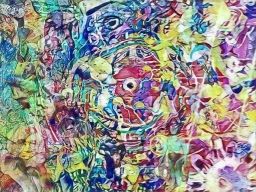
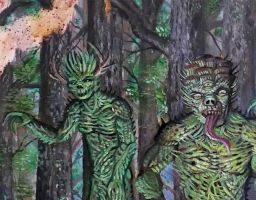
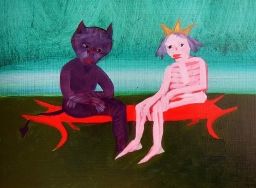
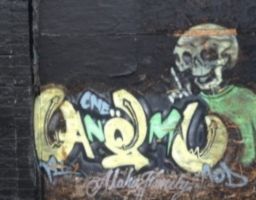

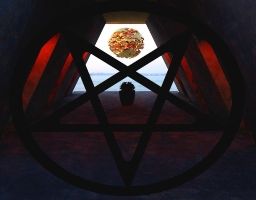

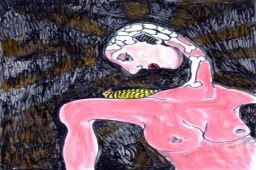
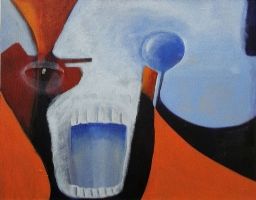

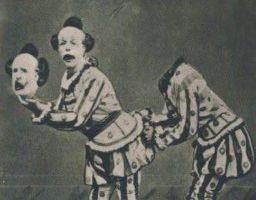
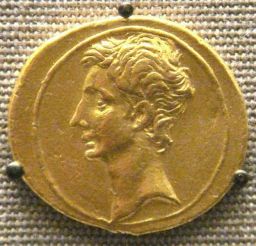
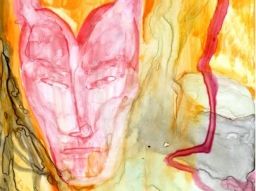
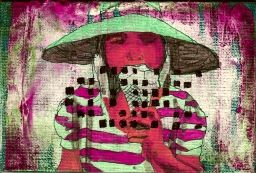

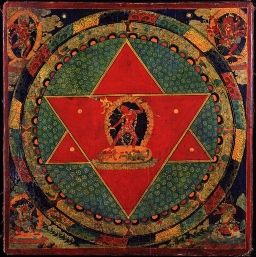
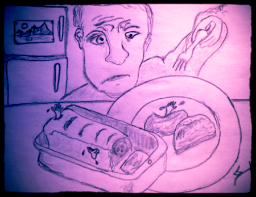
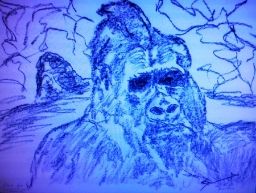


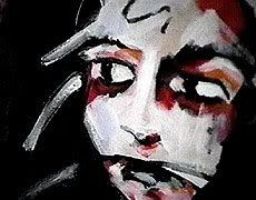
No comments:
Post a Comment